A financial analyst and an engineer in their late twenties, Adrien De Furia & Romain Le Roux are already collector of design and art. In collaboration with emerging designers, they have built a unique interior space in their Parisian apartment with vivid colors and interesting contrasts in texture and color — a place to dream, according to the French couple. Instagram is not only a platform for them to share their vibrant interiors, but also a place for them to get inspired and discover designers and galleries.
LARRY’S LIST had a chat with Adrien and Romain about the design style they are attracted to, their first and latest design pieces, the difference between collecting design and art, what they find most exciting about collecting design, and three emerging designers to watch out for.
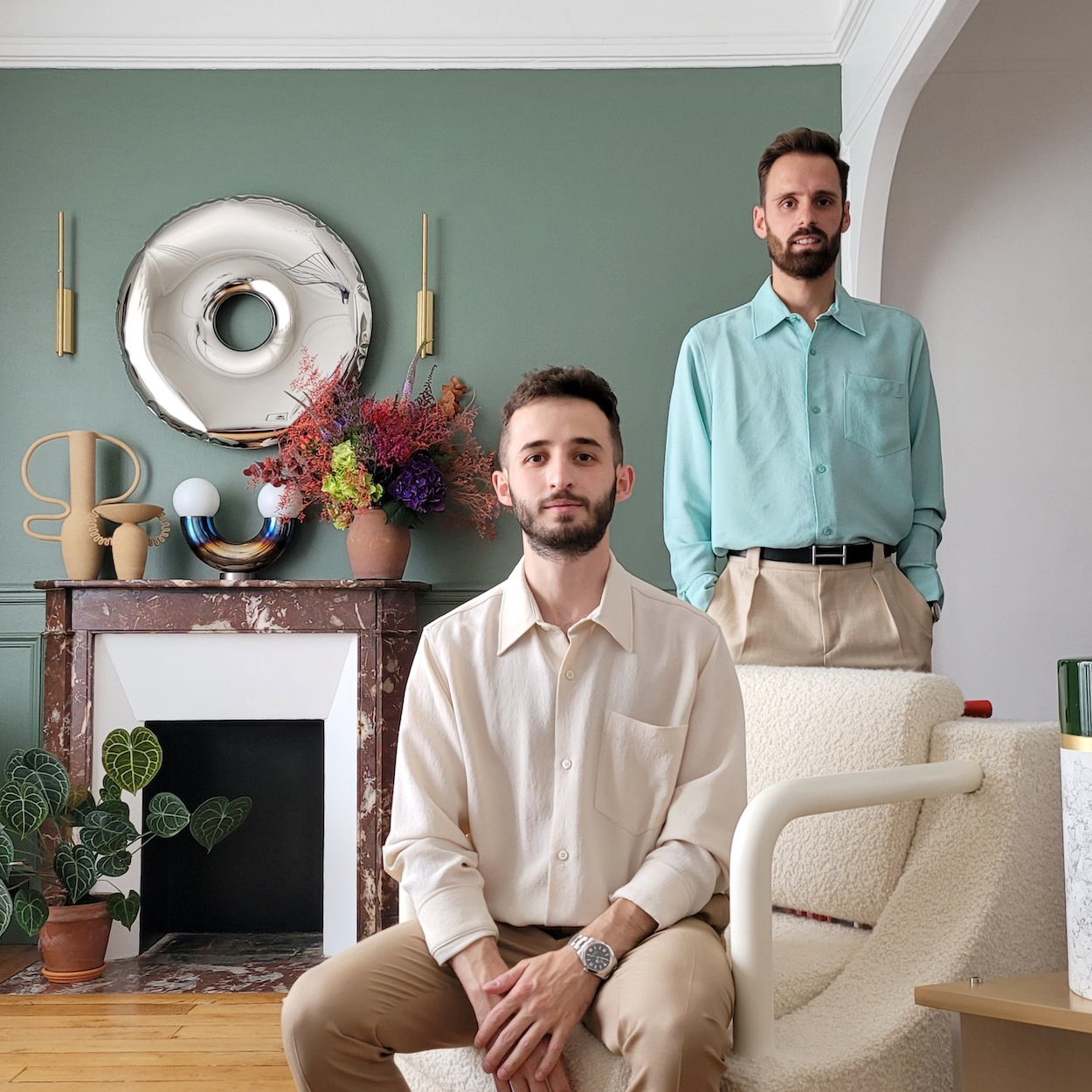
vases by Marta Dervin; Mirror Rondo by Zieta; flowers by Alexis Maillot; Lamp Rainbow by HAHA Design Studio for Arcade Collection 01commissioned by Relay Design.
Collecting
How did you start collecting design? Where did the interest in collecting design come from?
The idea of collecting design and art objects was in our mind for a long time but really came true when we bought our first apartment in Paris. Indeed, we had plenty of ideas to create something special, of course a place to live but also a place to dream.
We found inspiration in design magazines and Instagram where we discovered a lot of interesting designers and specialized galleries.
When did you fall in love with a piece of design? What was it?
The first piece we fell in love with is the room divider (Carlton), in wood and plastic laminate from Ettore Sottsass from Memphis Milano and that we encountered well before the purchase of our first apartment in Paris.
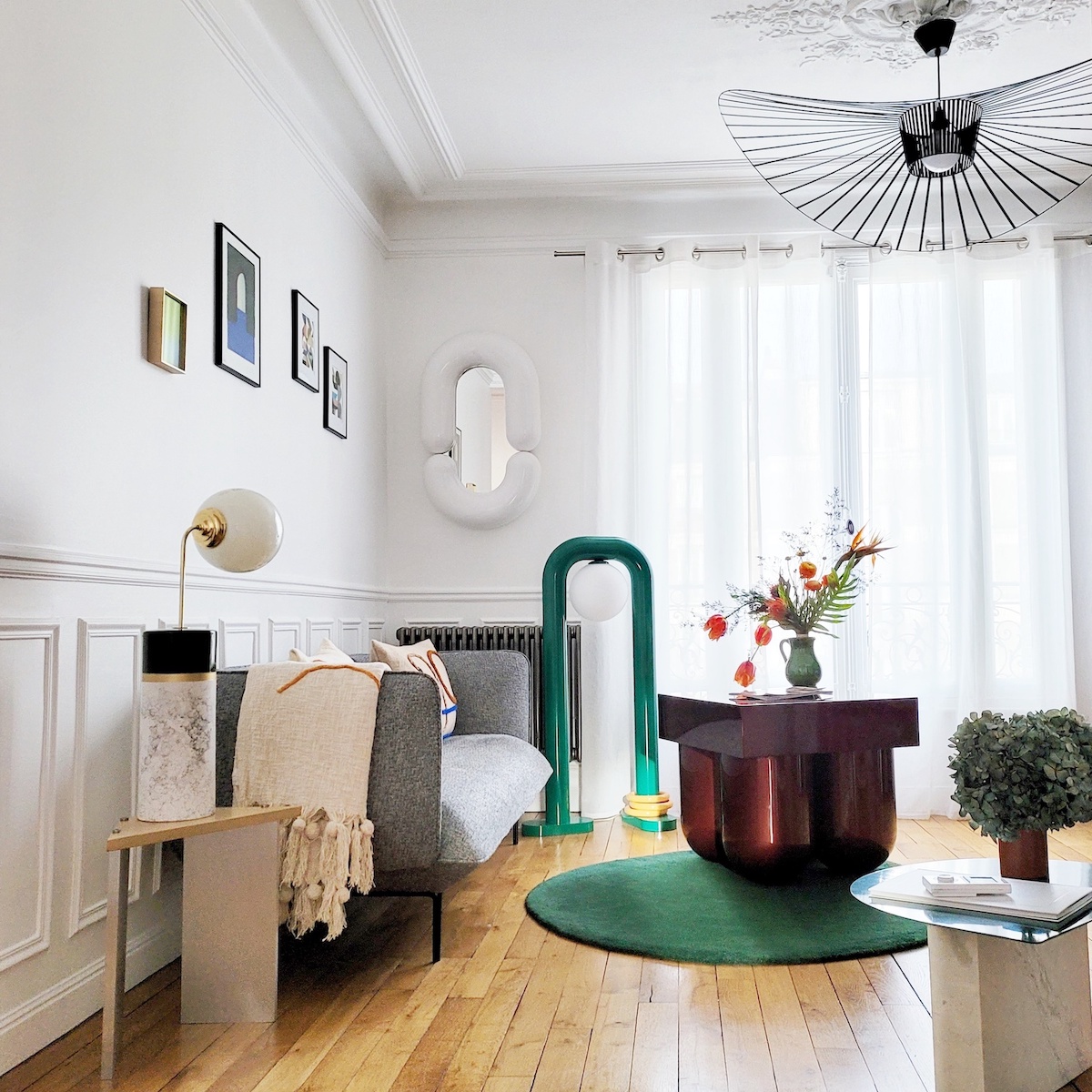
Is there any particular type of design that has consistently attracted you, or do you collect more than one style? And why?
Of course, we were really inspired and interested by the styles of Memphis and Bahaus, but the most important for us was to collect unique pieces, paying special attention to materials, with geometric designs, in attractive colors, and done by emerging designers.
We can see some bright colors, interesting color and texture contrast — are these what you like in design?
We love contemporary objects. The work and the alliance of natural materials such as marble, and the fruit of an alloy, such as aluminum or resins, allows playing on the effects of transparency and contrast. We wanted an atypical, lively, and sparkling interior.
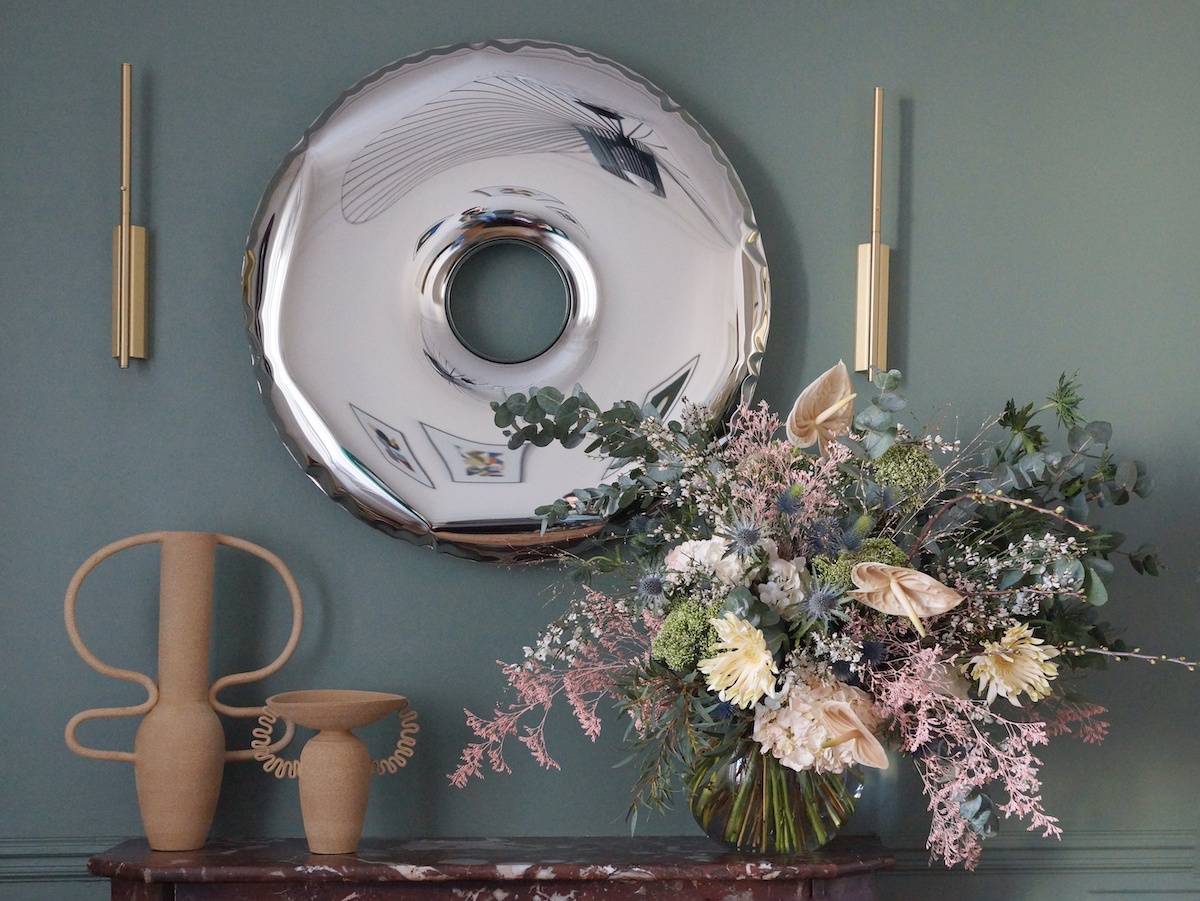
What were your first and the latest design purchases?
Our first purchase was a Zieta mirror (Rondo). In fact, traditionally the fireplaces of Parisian apartments are surmounted by a classic mirror framed in wood or gilded plaster. We wanted to break this code with a round piece in the shape of a Donut and made of metallic material similar to a helium balloon.
Our latest purchase is a piece of furniture by Johan Villadrich in aluminum and bronze details. Following the removal of partitions to increase the transparency and brightness of the living room, we designed with Johan a screen allowing a physical but also aerial separation between the dining room and the hallway. We wanted a clean piece of furniture that combines storage and exhibition space and that fits perfectly into the space under the ceiling cornices.
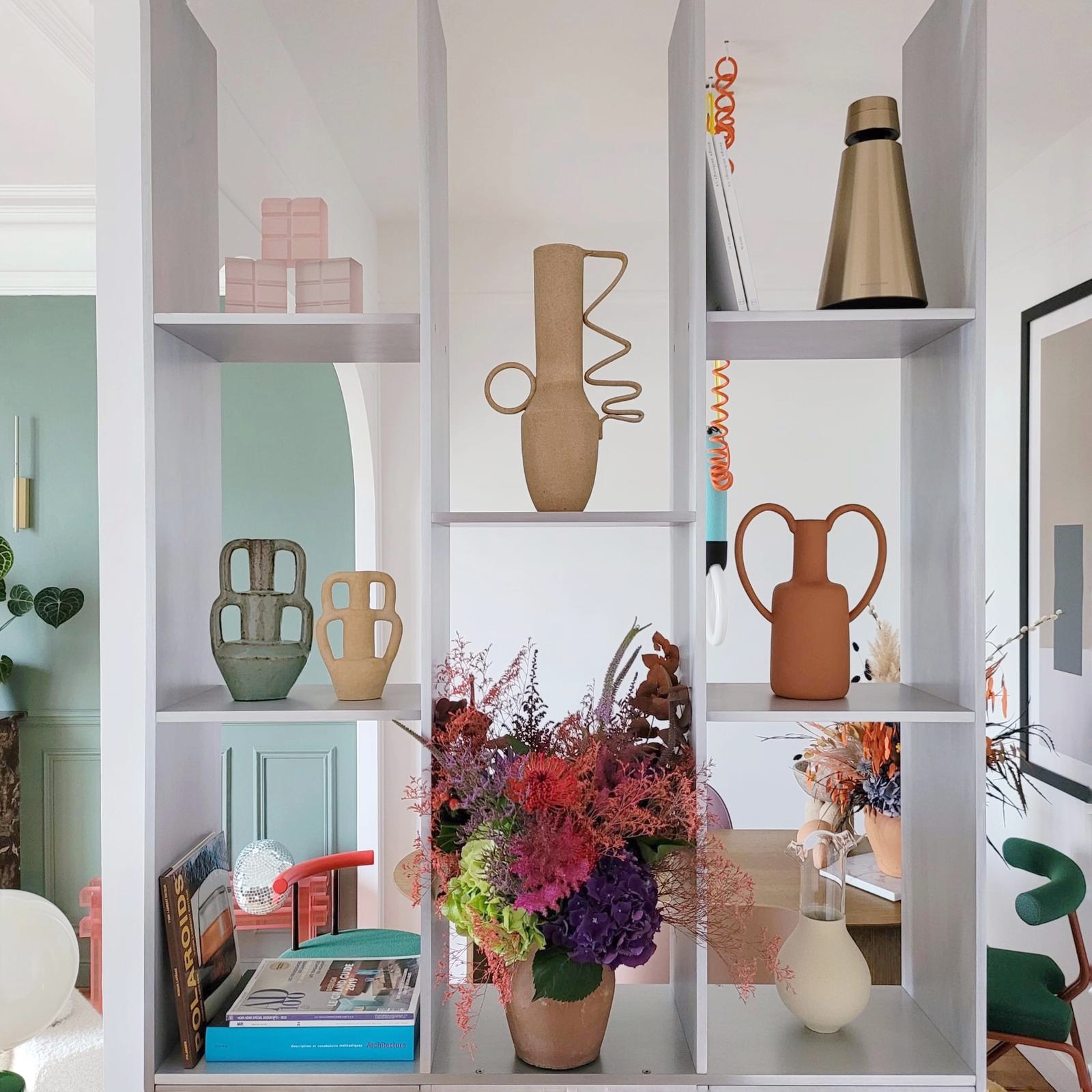
How many pieces do you own? Where do you display your collection?
We have about thirty pieces, all arranged in our apartment. The most important thing for us is to live with these favorite pieces and to be able to contemplate them every day.
Has your collection been featured in exhibitions? Would you wish to present your collection publicly?
We have pieces that have been exhibited by Designers after completion, before entering our apartment.
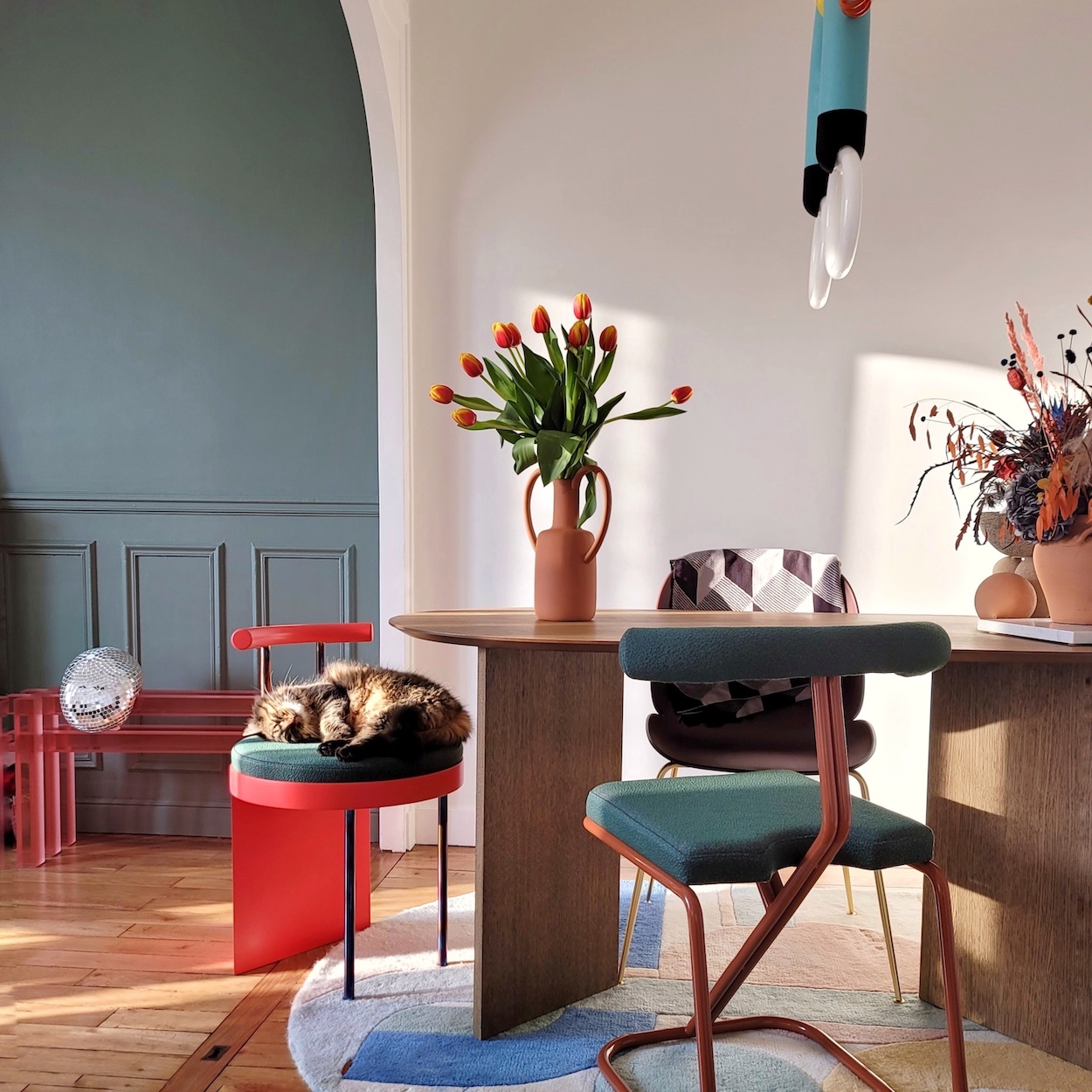
What considerations guide you to make a purchase? Does the functionality of the design weigh heavily in your consideration of a purchase?
The idea emerges from an empty space that we want decorated or arranged. We then work with a designer to create a unique piece that adapts to the available volume and can be combined with other pieces already present. We pay great attention to the selection of materials, and of course, as we are living in the appartement, the functionality of the design remains firmly important.
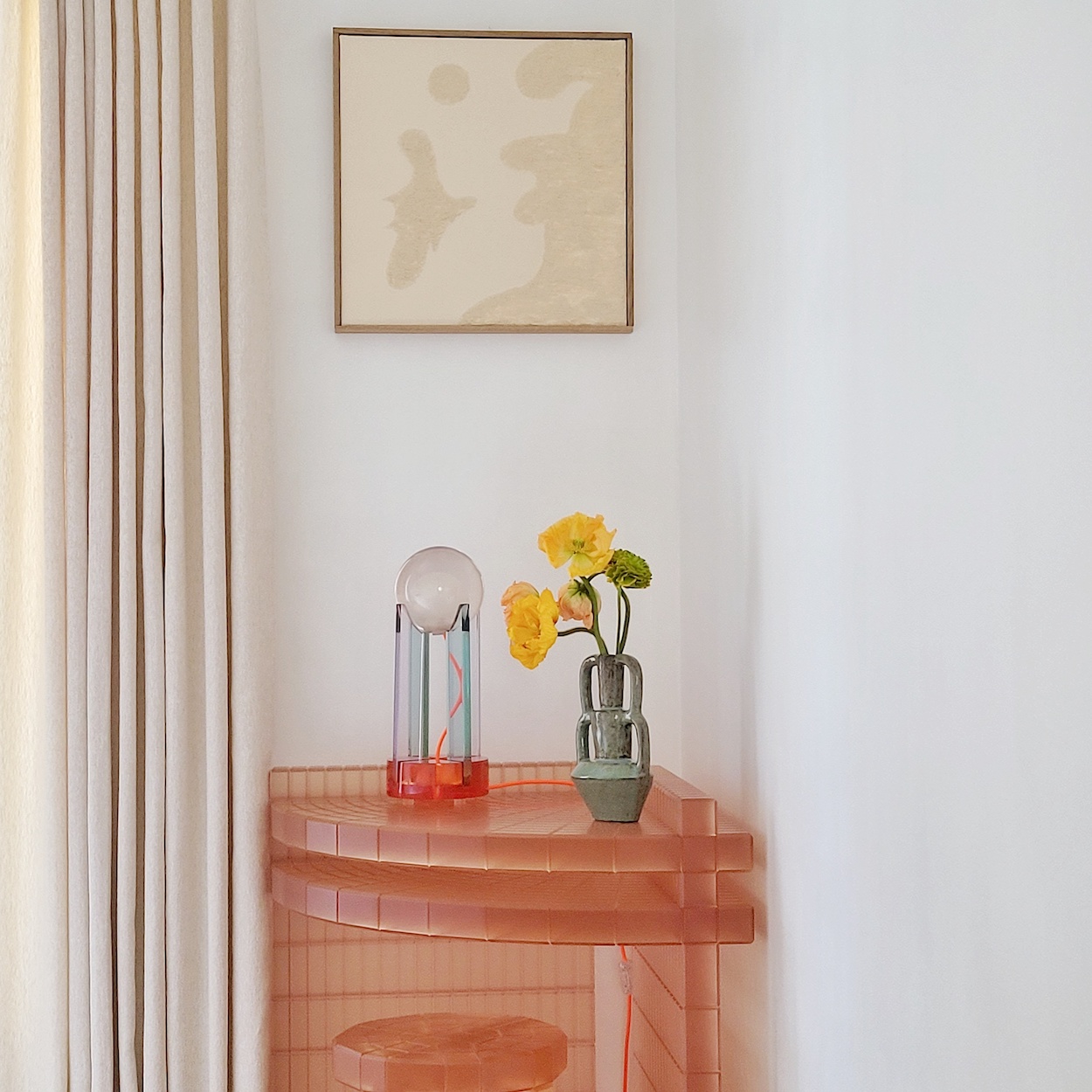
Which is favorite style or designer? If you were to choose one design piece as a favorite, which would it be?
We don’t have a favorite piece but rather a combination of pieces that creates our indoor environment that we love so much. About the style, as we said, we were inspired by Memphis, Bahaus. For the designers, we do not have a favorite, we have worked with designers who are all equally talented: Studio Supaform, Laurids Gallée, etc.
What are on your design wish list at the moment?
We don’t have a shopping list but are running when we have a crush — of course within the budget we can allocate to the parts we select. The next piece will probably be a sofa from Studio Supaform.
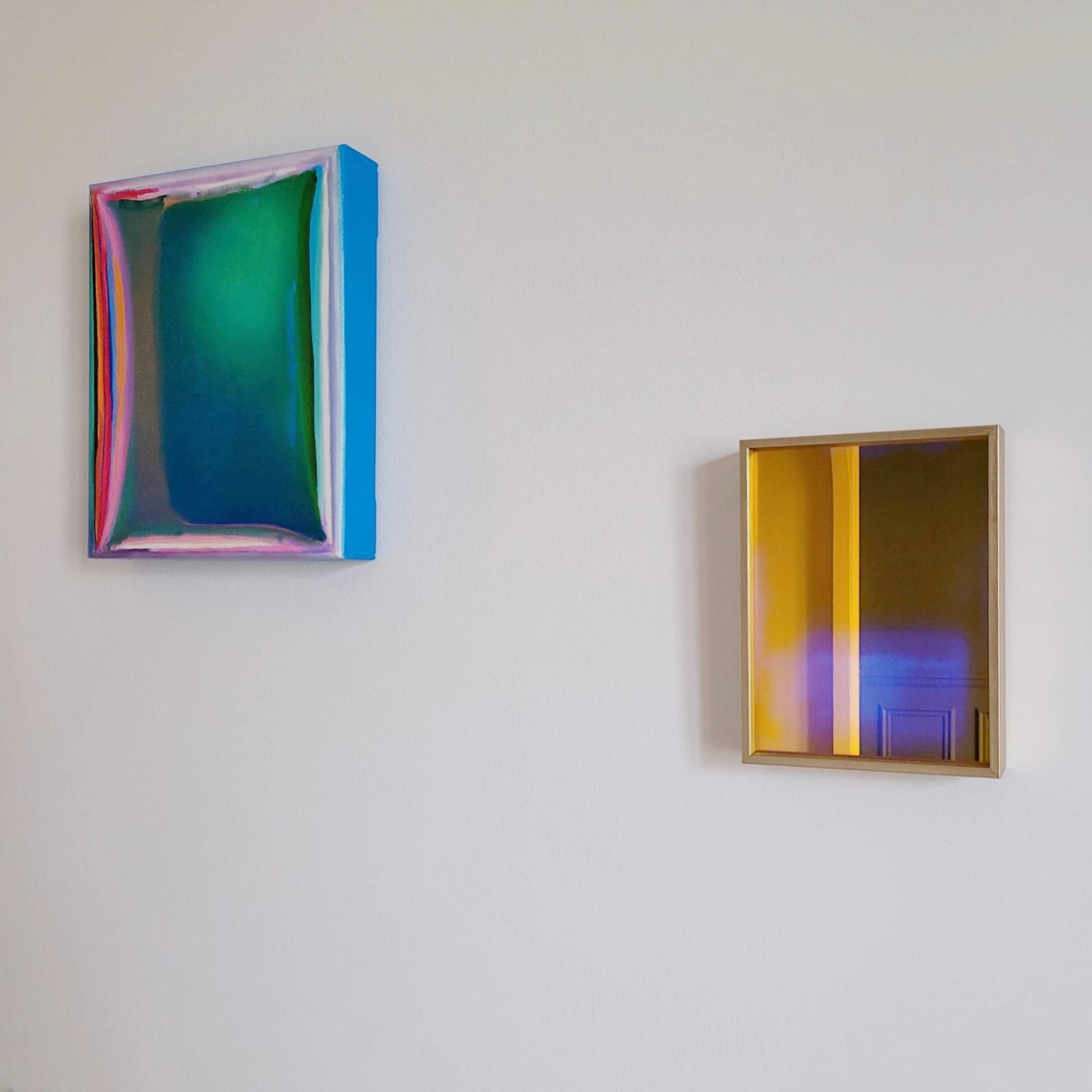
You also collect some artworks by French contemporary artists, like Thomas Devaux and Gioele Amaro. How do their artworks go with your design collection?
The objects of these artists are very graphic works which correspond to the codes of the design objects that we have. The biggest distinction is the story these artists want to tell through these works of art.
What do you think is the biggest difference between collecting art and design?
We think the biggest difference is when you collect design, you can find a compromise between the ideas, the creativity of the designer and your own requirements, you can deliver an information altogether. When you collect art, you accept the vision or the emotion of the artist.
What do you find most exciting about collecting design?
What is most exciting is the constant search and discovery of new objects but also the realization of an idea, which after several months of adjustment with a designer, comes to life and ends up arriving in our interior.
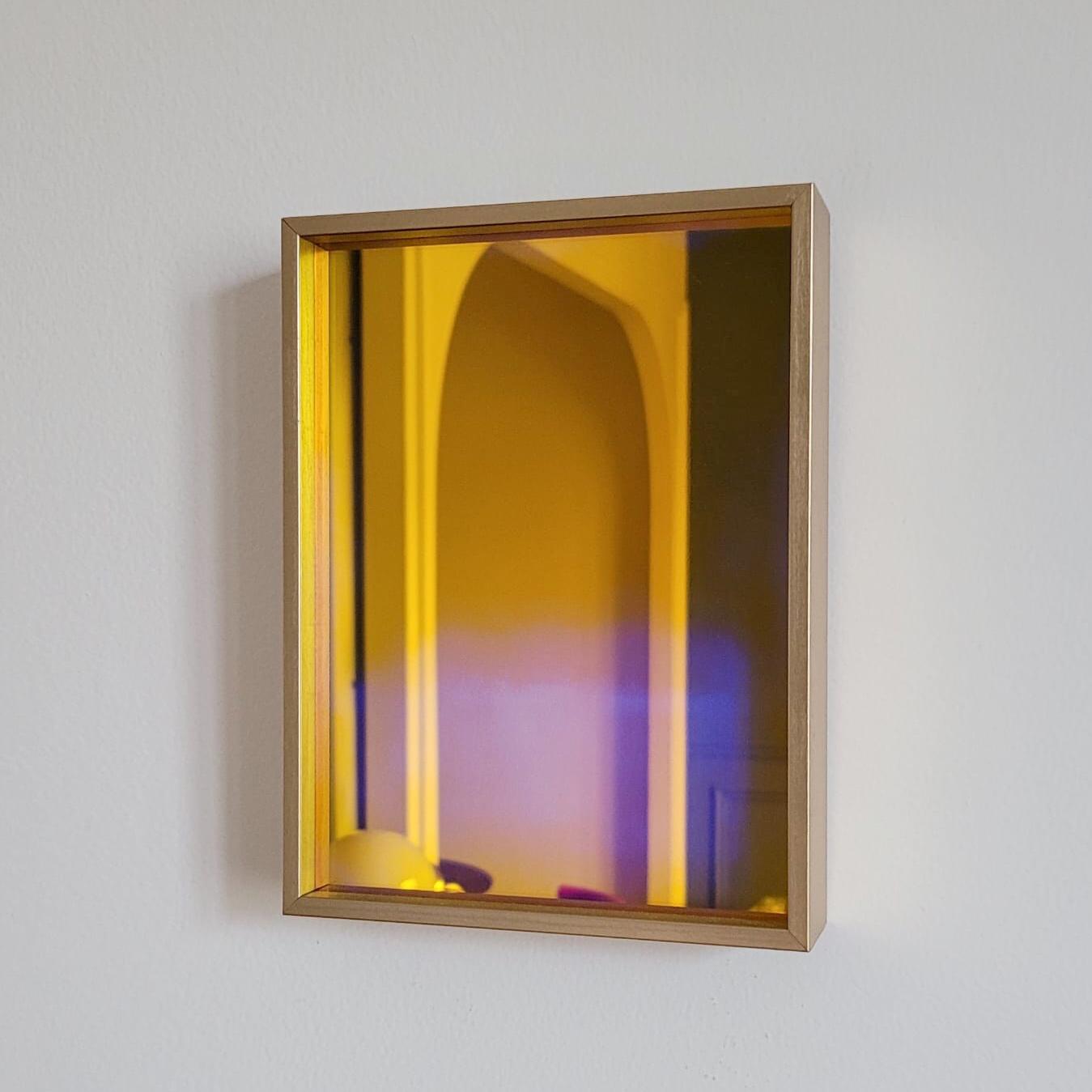
The design scene
How often do you go to design fairs or events? Which upcoming ones do you most look forward to?
On average we go to around 10 design fairs per year. The next event we will go is the exhibition offered by Villa Noailles for the summer. Then, we will go to Art Paris this September.
Can you name three emerging designers who should be on our radar?
Studio Supaform, Laurids Gallée, and Müsing-Sellés
What do you think about the design scene and market in Paris or France?
France is clearly one of the world’s most vibrant, creative countries. Of course Paris is at the heart of this creativity, but culture, history, luxury, are all elements that have shaped France and allow various artists or designers to find inspiration and express themselves today. Each year, there are dozens of design exhibitions across the country, whether in Paris, Avignon, on the French Riviera, or even in Bordeaux — there is an interesting diversity.
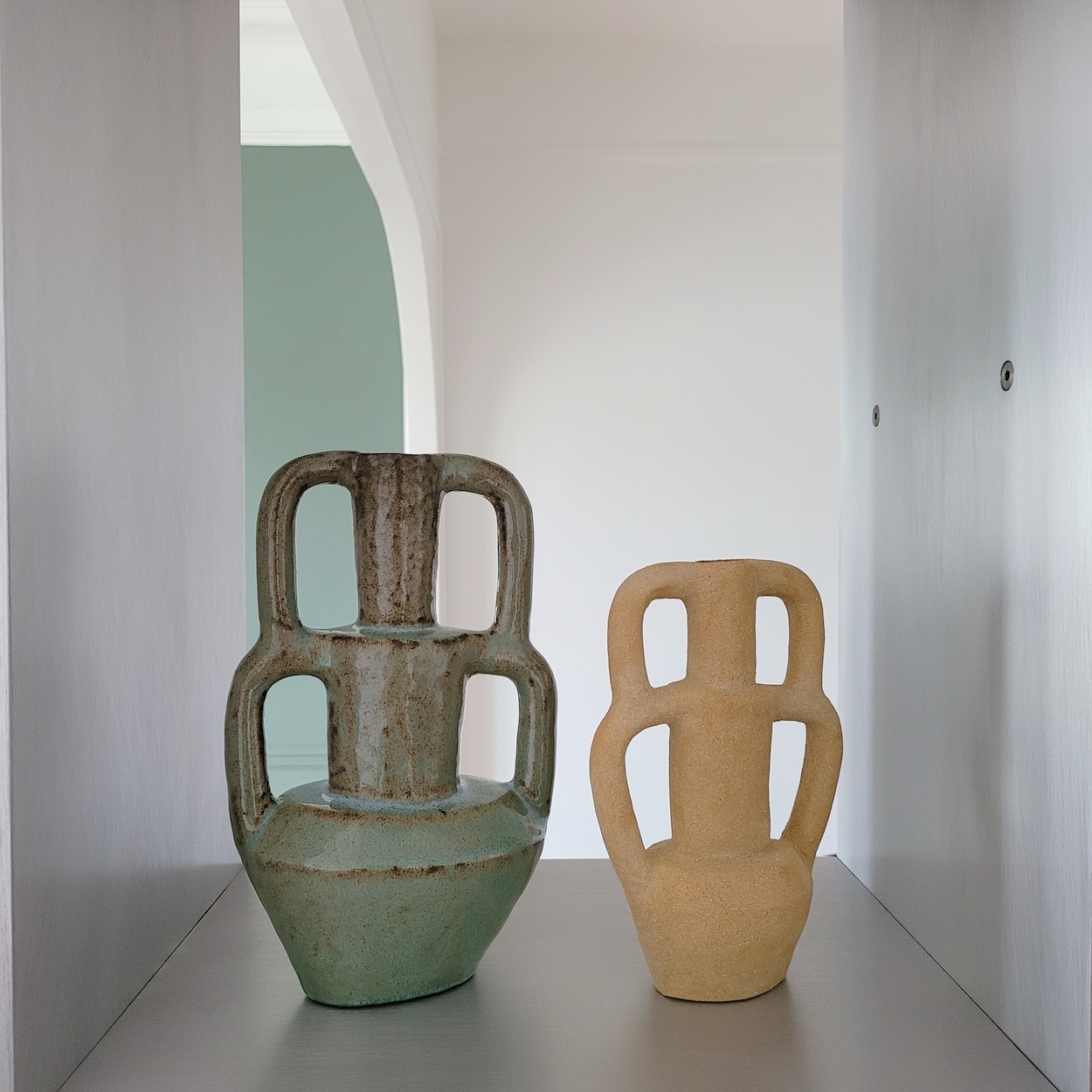
Instagram: @adrien.xviii, @roomlra
A selection of designers Adrien and Romain collect:
Dovain Studio
Johan Viladrich
Laurids Gallée
Marta Dervin
Rémi Brac
The interview was facilitated by Marisa Müsing, designer and co-founder of müsing—sellés.
By Ricko Leung





